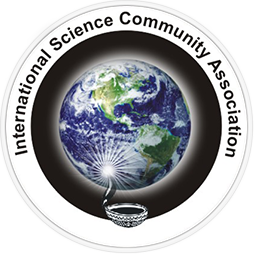Probiotic Interventions for Managing WSSV in Shrimp Aquaculture
Author Affiliations
- 1PG and Research Department of Zoology, Muslim Arts College, Thiruvithancode, Kanyakumari 629174, Affiliated to Manonmaniam Sundaranar University, Abishekapatti, Tirunelveli-627012, Tamilnadu, India
Res. J. Recent Sci., Volume 14, Issue (2), Pages 32-35, April,2 (2025)
Abstract
White Spot Syndrome Virus (WSSV) is a major challenge in shrimp aquaculture, causing severe economic losses on a global scale. Traditional management practices, including the use of antibiotics and chemical treatments, have proven insufficient and often detrimental to both shrimp health and the environment. This study explores the potential of probiotics as a sustainable alternative for enhancing shrimp immunity and managing WSSV outbreaks. Probiotics are beneficial live microorganisms that provide health advantages to the host when consumed in sufficient quantities. The review highlights current research demonstrating the efficacy of various probiotic strains in improving shrimp health, boosting immune responses, and reducing pathogen prevalence. Despite their promise, several research gaps remain, particularly regarding the mechanisms of action, strain-specific efficacy, and the impact of probiotics on aquatic ecosystems. Future research should focus on field trials, long-term effects, and the economic feasibility of implementing probiotic treatments in commercial shrimp farming. By addressing these gaps, probiotics could emerge as a best practice in shrimp aquaculture, promoting healthier shrimp populations and fostering more sustainable farming practices.
References
- Wongteerasupaya, C., Vickers, J. E., & Boonsaeng, K. (1995)., A non-occluded, double-stranded DNA virus in shrimp., Journal of Virology, 69(4), 2445-2452.
- Gatesoupe, F. J. (1999)., The use of probiotics in aquaculture., Aquaculture, 180(1-2), 147-165.
- Merrifield, D. L., & Rodiles, A. (2015)., Nutrition: Gut health and the role of probiotics., Aquaculture Research, 46(2), 333-348.
- Lightner, D. V. (2003)., Biosecurity in shrimp farming: Pathogen exclusion., World Aquaculture, 34(1), 30-33.
- Otta, S. K., Sahu, N. P., & Sinha, M. (2015)., The impact of white spot syndrome virus (WSSV) on shrimp aquaculture: A review., Aquaculture, 442, 67-78.
- Vidal, J. C., De la Vega, J. F., & Rodríguez, J. M. (2006)., Transmission dynamics of WSSV in shrimp aquaculture systems., Diseases of Aquatic Organisms, 69(1), 47-55.
- Ruangtong, R., Boonyaratpalin, M., & Kasornchandra, J. (2015)., The effects of chemical treatment on the health of shrimp., Aquaculture Research, 46(3), 705-715.
- Nussey, G. J., Main, K. J., & Evans, L. A. (2012)., The effects of disinfectants on shrimp health and growth., Aquaculture, 354-355, 139-146.
- Kumar, S., Kim, K. J., & Kim, D. (2017)., Antiviral activity of natural compounds against WSSV: A review., Aquaculture Research, 48(5), 2204-2215.
- Kumaran, T., Michaelbabu, M., Selvaraj, T., Albindhas, S., & Citarasu, T. (2010)., Production of anti-WSSV IgY edible antibody using herbal immunoadjuvant Asparagus racemosus and its immunological influence against WSSV infection in Penaeus monodon., Journal of Aquaculture Feed Science and Nutrition, 2, 1-5.
- Gautam, R., Kumar, A., & Jha, D. K. (2020)., Antimicrobial resistance in aquaculture: Challenges and solutions., Aquaculture Research, 51(2), 479-490.
- Baconguis, I., Taro, M., & Villanueva, B. D. (2021)., The effects of stress on shrimp health and disease resistance., Aquaculture, 534, Article 736205.
- Binh, T. T. N., Duc, H. M., & Bui, H. T. O. (2020)., Economic implications of WSSV outbreaks in shrimp farming., Aquaculture Economics & Management, 24(4), 391-408.

